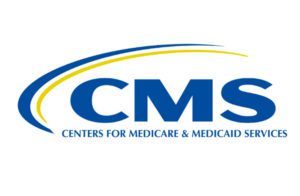 The Centers for Medicare & Medicaid Services (CMS) is proposing the new Transitional Coverage for Emerging Technologies (TCET) pathway for breakthrough devices to secure Medicare coverage.
The Centers for Medicare & Medicaid Services (CMS) is proposing the new Transitional Coverage for Emerging Technologies (TCET) pathway for breakthrough devices to secure Medicare coverage.
The voluntary program would expedite Medicare coverage for new medtech innovations, offering an estimated three to five years of transitional coverage. CMS repealed a similar program, Medicare Coverage of Innovative Technology (MCIT), in 2021, citing concerns that it may have covered devices without adequate evidence.
The new TCET proposal “supports both improved patient care and innovation by providing a clear, transparent, and consistent coverage process while maintaining robust safeguards for the Medicare population,” CMS said in a statement.
CMS will be taking public comment on the notice for 60 days after publication. The notice is scheduled for publication on June 27, 2023.
CMS is currently seeking public comment on new guidance on evidence review and coverage with evidence development.
The TCET pathway will be available for FDA-designated breakthrough devices within a Medicare benefit category, but that are not already the subject of an existing Medicare national coverage determination (NCD) and not otherwise excluded from coverage by law or regulation. (CMS notes most diagnostic tests with breakthrough designation should have coverage determined through existing pathways.)
CMS said TCET offers device manufacturers “opportunities for increased pre-market engagement with CMS and, in an effort to reduce manufacturer burden, an unprecedented level of flexibility to address evidence gaps to support Medicare coverage.”
TCET will let device developers address evidence gaps with fit-for-purpose studies “where the study design, analysis plan, and study data are appropriate for the question the study aims to answer,” CMS said.
Improving patient access to breakthrough medical technologies is a top priority for AdvaMed, the medtech industry association said in response to the new details.
“While the draft rule requires further review, we are pleased that CMS recognizes the need to improve the coverage process for seniors,” AdvaMed President and CEO Scott Whitaker said in a statement. “We continue to believe that immediate coverage of FDA-approved technologies represents the best path forward to ensure seniors receive the benefits they need and America’s medtech companies continue to lead the world in medical innovation. ”
TCET’s evidence previews and evidence development plans
“Evidence development to support Medicare coverage through the TCET pathway will be based upon a more transparent and predictable evidence-generation framework,” CMS said.
Two key TCET components are evidence previews and evidence development plans.
The TCET pathway will include a contractor-conducted evidence preview, a “focused literature review that would provide early feedback on the strengths and weaknesses of the available evidence, including any evidence gaps, for a specific item or service.” These evidence previews will use standardized evidence grading, risk of bias assessment, and applicability assessment, with more details coming soon.
Device manufacturers will also need to develop an evidence development plan (EDP) to address any evidence gaps raised by the evidence preview. CMS said EDPs might include traditional clinical studies, fit-for-purpose studies and secondary use of real-world data.
Evidence development under the TCET pathway won’t require duplicative or conflicting evidence development with FDA post-market requirements
CMS said to expect another announcement soon about an NCD pilot incorporating aspects of the new TCET evidence development framework.
The TCET pathway process
To self-nominate for the program, manufacturers of FDA-designated breakthrough devices will be able to express their interest by emailing CMS at a program-specific address to be established. Manufacturers should submit their nominations about a year before the manufacturer wants an FDA decision.
After submitting, CMS would meet with the manufacturer to discuss the technology and talk through questions about the process. CMS would then meet with FDA for more information about the technology, the device and review timing. The technology might also undergo a benefit category review.
When CMS has decided whether to accept the device for the TCET pathway, it will will notify the manufacturer by email.
When a device in the TCET pathway secures FDA premarket approval, 510(k) clearance or de novo classification, CMS will start the NCD process. CMS intends to finalize TCT NCDs within six months of FDA market authorization.
Coverage under TCET will last “only as long as needed to facilitate the timely generation of evidence that can inform patient and clinician decision-making,” CMS said. (A visualization of the proposed TCET pathway’s timelines is at the end of this post.)
“In general, we anticipate this period would last for three to five years as evidence is generated to address evidence gaps identified in the evidence preview and lead to a predictable, long-term Medicare coverage determination,” CMS said.
A manufacturer’s EDP will specify a review date, and TCET will offer an additional year of coverage after the study’s completion for analysis, reporting and submission for peer-reviewed publication. Coverage would continue with EDP progress updates.
CMS plans to conduct an updated evidence review within six months of the EDP-specific review date. This updated evidence review would again use a third-party contractor, this time for qualitative evidence synthesis and comparison against benchmarks for each outcome specified in the original NCD.
“CMS will conduct quality assurance on the contractor review [and] review applicable practice guidelines and consensus statements and consider whether the conditions of coverage remain appropriate,” CMS said.
When appropriate, CMS would then open an NCD reconsideration by proposing an NCD without evidence development requirements, and NCD with continued evidence development, a non-coverage NCD or an NCD rescission.
CMS said standard NCD processes and timelines would apply, with 60 days for CMS to finalize the NCD reconsideration after a 30-day public comment period.
CMS has more information on the TCET pathway in a program fact sheet, in a CMS blog post, and at the Federal Register. CMS also laid out the proposed TCET pathway’s timing in the illustration below.

Courtesy of CMS